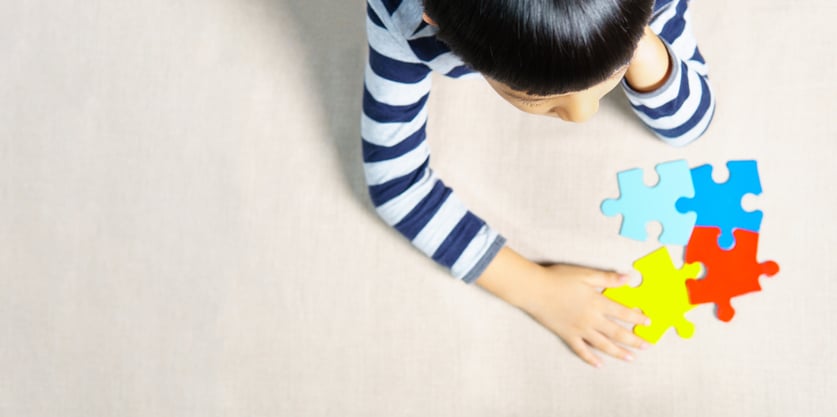It’s So Confusing: The Language of Neurodiversity and Disability
Have you ever wondered, “Should I be using the term disability? What about neurodiversity?” If you have, believe me, you are not alone. Having worked in the “field of disability” for nearly two decades, I ask myself this question nearly every month.
What should I say and – more importantly – what should I say to convey my respect for community members?
What do these terms mean and which one should we as parents, advocates, educators, and people with disabilities be using?
The Term "Disability"
Let’s start with the term disability. Disability is a term that can vary based on laws, culture, and philosophical perspectives. Without getting into the nitty-gritty of the term, let’s just use the definition of the Americans with Disabilities Act (ADA). Disability is defined as “a physical or mental impairment that substantially limits one or more major life activities.”
Now, this definition is highly legal and medical in nature. Moreover, it negatively frames a disability focusing on perceived impairments and limitations in people, rather than barriers imposed by the environment to people and the skills, talents, and abilities that they possess. However, disability is also a term of legal and cultural significance. Laws about disability, and the inclusion of the term disability in laws, are something that people with disabilities have fought to have for many years. As a result, people with disabilities, our people, secured for us civil rights which serve (in some ways) to protect us from discrimination by society. These civil rights leaders advocated, collaborated, marched, rolled, and pulled themselves up the stairs of the United States Capitol Building to include people with disabilities as a protected class of people in the United States. As such, disability can be thought of as a symbol of pride that our people fought for tooth and nail. For this reason, many within the disability community identify with this term and are proud of being a part of this community.

The Term "Neurodiversity"
Neurodiversity is a newer term. The term was coined by Judy Singer, an Australian sociologist, in the early 1990s. Initially used to refer to autism, more recently neurodiversity has come to refer to the natural variation in the human brain.
Essentially, neurodiversity is a term that is inclusive of ALL people because no two brains are exactly the same and all offer a person areas of strength and areas of challenge – no better, no worse. Still, people with some brains and associated skills and behaviors are more closely aligned with what is expected by the larger society, and people with some brains and associated skills and behaviors are less aligned with what the larger society deems expected. These brains are referred to as neurotypical and neurodivergent respectively. Neurodivergent people include those with learning disabilities, ADHD, autism, psychiatric disabilities, traumatic brain injuries, intellectual disabilities, and people referred to as “gifted and talented” – all of whom are important and should be valued and respected members of society.
Now, some might say that the term neurodivergent is inherently negative as it serves to separate people who do not conform to societal expectations. Others argue that it is not negative at all, as diverging from the norm adds to societal perspectives, helps us to “think outside the box,” encourages the advancement of our society, and much, much more.
What Term Should I Use?
So, as illustrated, opinions on the use of these terms vary from person to person. Even among professional people with these identities, organizations, schools, and friends, differences in preferred language exist. This once again raises the question of which words to use. Here is my recommendation. When talking about a group of people, unless there is an agreed-upon language to be used in the space, use the language that you are most comfortable using. However, I suggest you preface your choice of language with why you choose to use the term. From there, acknowledge that others have different preferences that are just as valid and should be respected. When talking about an individual, for example, Jane Doe, ask her preferred language and use that. At the crux of language is showing respect to those living with the identity. As many people with disabilities and/or neurodivergence have been discriminated against, devalued, and disrespected for their identity, it is critical that we lead with the intent to be respectful.

With all of this said, I am not suggesting that the terms disability and neurodiversity have to be in direct opposition to one another. Some, like me, actually identify as both disabled and neurodivergent! I am proud of my history, and I respect the work of those who have fought to protect my civil rights by getting the term disability into laws, but I also think that I am neurodivergent and my brain is not broken, it’s simply one of the many wonderful variations that exist in society. There are things at which my brain lets me excel in our society and there are things that my brain is challenged by in society. Moreover, sometimes the things that challenge me and result in me working extra hard are the things that motivate me the most. The things that I am skilled at and can do in my sleep get boring after a while because they are too easy. But as noted earlier, this is one opinion among many in our world.
In the end, whether you call me disabled or neurodivergent, I simply ask that you call me it respectfully.
We hope you enjoyed the information in this article. STAGES® Learning also offers free downloadable resources to support teaching and learning with autistic individuals. Start with our free Picture Noun Cards and see our collection of other downloadable resources here!





